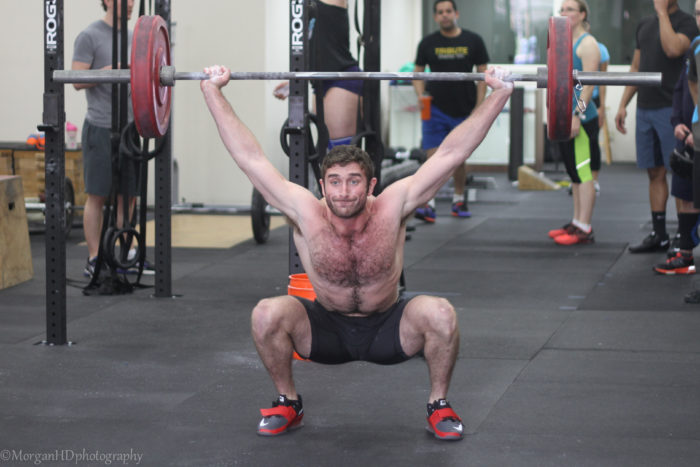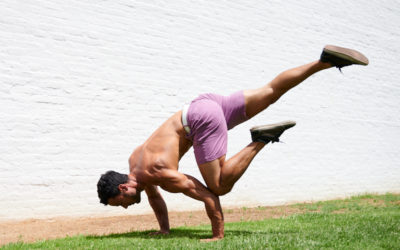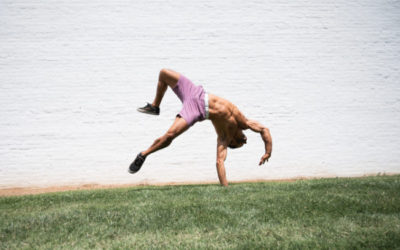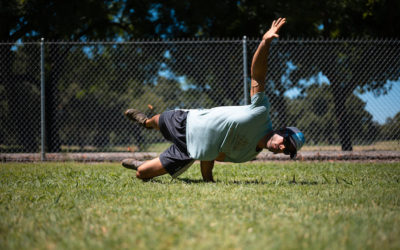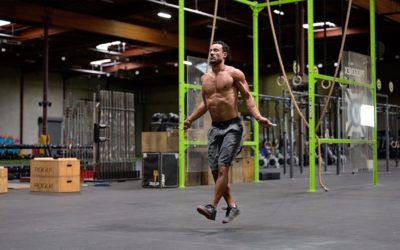With CrossFit being “unknown and unknowable” literally any combination of multiple snatches or snatches in conjunction with other movements is possible. Since it is impossible to train every possibility, we have to stick to foundational principles that must broadly prepare us for a range of likely variables. Here are 4 common snatch variants you’ll need to a master to have a chance in CrossFit competition.
Heavy Single
Traditional training for Olympic weightlifting specifically prepares you to lift a heavy 1 rep max. While CrossFit will never allow anyone to lift in a fresh state and rarely even when you’re not out of breath, it is essential to have experience with strict Olympic weightlifting training.
This is where technique and consistency are developed. Lots of rest between sets at marginal percentages to refine your speed and accuracy with the barbell. The accessory lifts paired with lots of practice on the snatch build postural strength and address weaknesses you may have from previous sports, or your unique bone structure.
By training this way you’ll build strength, consistency and confidence with the barbell.
Rapid Fire/Touch and Go
The opposite end of the spectrum is light and fast with high reps. Common in the open, which is where most people will compete, is a 75 lb snatch for men and 55 lb snatch for women. These “snatches” can be executed as a ground to overhead in one motion. If you are taking the time to approach the bar, bend over, make your back straight, pull under the bar, stand up again and pause with your lockout for 3 seconds, you are going to move way too slow. If you do manage to move fast while flexing every muscle in your body you’ll be exhausted and unable to continue at a high pace through the full workout.
These reps require you to be loose and agile, much like running striders, or pedaling at a quick tempo on a bike. Taking the time to lift light weights and to understand how to keep your grip relaxed, when to breathe throughout the movement, the correct combination of hip drive and arm pull are essential to performing well on these tests.
Drop and Pop
Snatch the weight, drop it, snatch it again right away. The weights are going to be moderate for this type of lift and enough reps where it wouldn’t be smart to try and do touch and go for fear of blowing up midway through the workout. A good example is Isabel, if it is more than 60% of your 1 rep max snatch. Here it’s going to be the best strategy for you to drop the weight every single rep and take minimal rest in between. Both the slow setup of the heavy single technique and the heart exploding speed of the touch and go will be inappropriate for this load and rep scheme.
To “drop and pop” well you need to be able to get into a solid position quickly and nail a very correct form rep and then drop the weight as close to your body as possible to eliminate time between reps. Your setup is a little less tight than a true heavy single, but the pull under and turnover are sharp and aggressive. Being able to execute the quickness of a heavier lift repeatedly and maintain this coordination will allow a “weaker” athlete to keep pace with a strong athlete who disregards technique in favor of brute force.
Fast and Heavy
Eventually run into fast AND heavy. Aerobically distressed, muscles fatigued, and confronted with a barbell at or near your 1 rep max. Having the motor patterns for heavy lifting engrained is essential in this situation. Building the trust and quick set up of drop and pop lifting is a must.
Move directly without rushing and nail your lifts with precision and confidence when it gets fast and heavy. If it’s a series of lifts you may be able to begin with drop and pop technique or even touch and go. By the end you’ll probably have to shift to full Olympic lifting heavy single technique to finish.
Having a solid base of pure Olympic lifting technique is essential to success in competitive fitness, but it is not sufficient. You must also develop the ability to stay relaxed on light loads, apply the correct force on moderate weights to keep moving, and develop the trust and confidence to maintain your technique on heavy lifts under exhaustion.
Taking the time to develop well-rounded technique and not to overemphasize any single method in your training will help you be prepared for anything the snatch can throw at you in CrossFit. This same logic of multiple variations of a single movement can be applied to all of the movements within competitive fitness. As you master the different uses of each of the movements in CrossFit you will become better and better prepared for the full breadth that any competition can throw at you.
